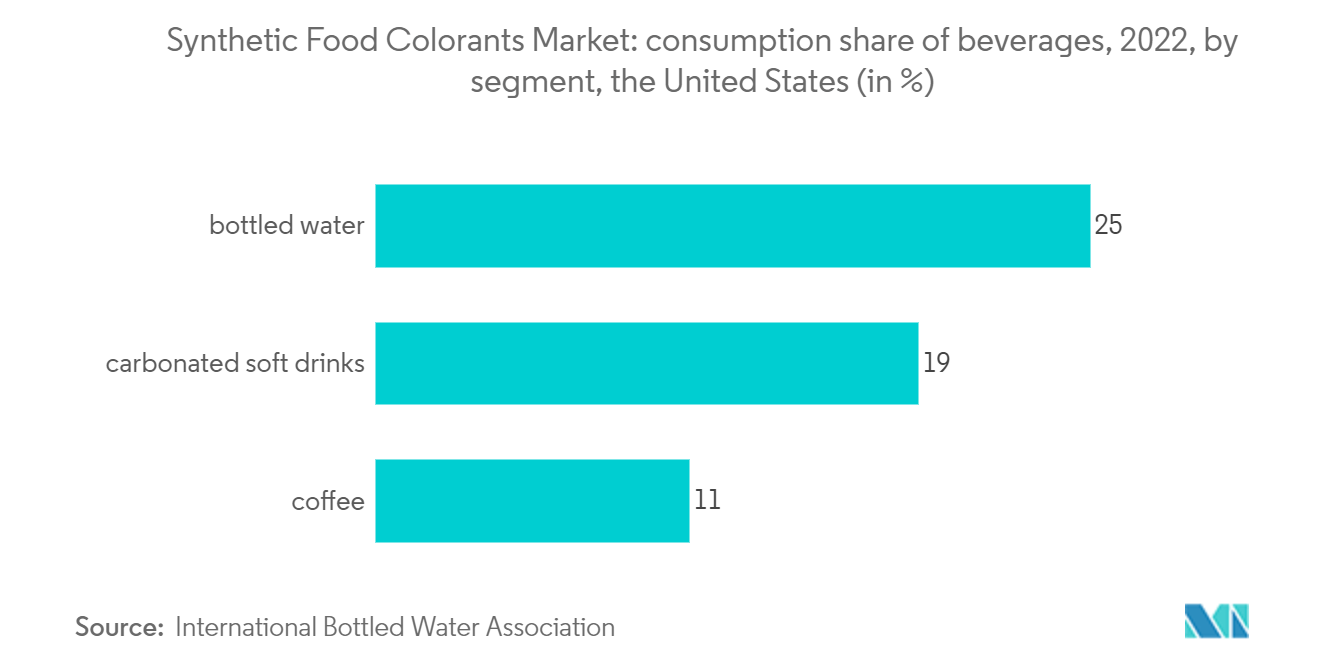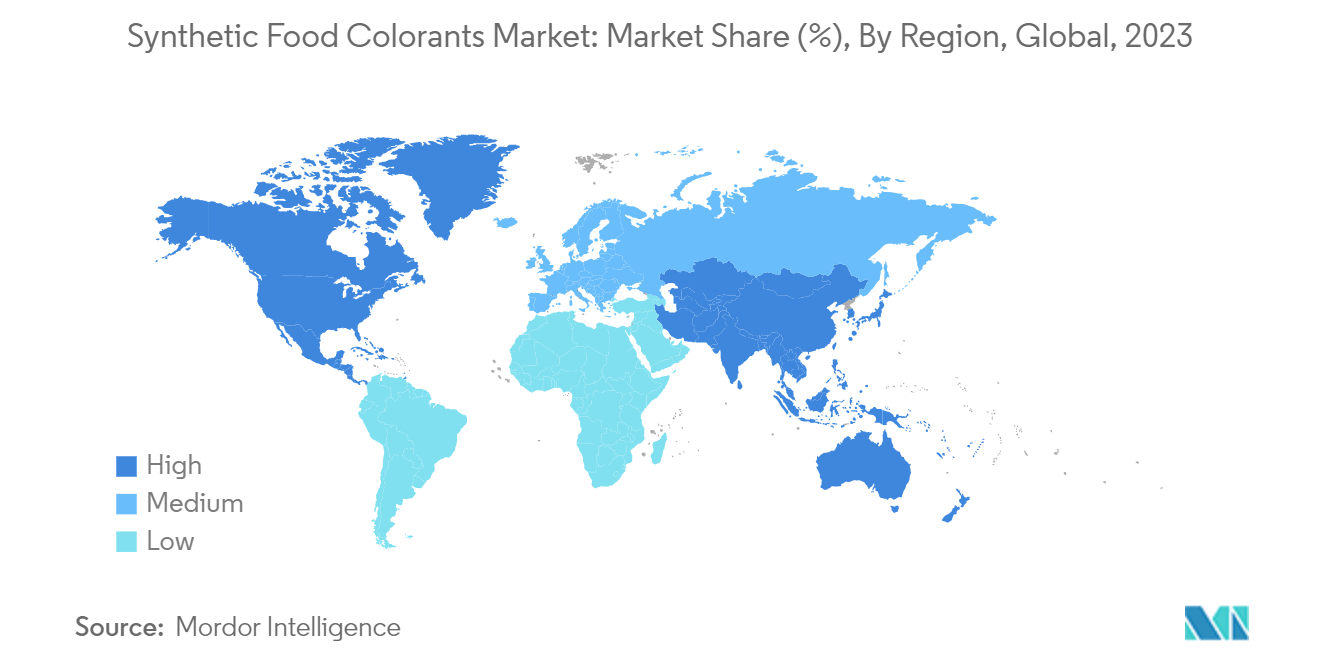Market Trends of Synthetic Food Colorants Industry
Synthetic Food Colorants Are Extensively Used in Beverages
Food color plays an essential role in the sensory appeal of carbonated soft drinks, and manufacturers strategically use synthetic colors to evoke specific flavors and distinguish between various product line variants. For instance, a bright red is associated with cherry flavor, while a deep orange signifies orange-flavored soft drinks. Moreover, synthetic food color is a major ingredient in functional beverages such as protein and dairy drinks to provide its authentic color. Owing to the increase in the consumption of dairy drinks worldwide, the synthetic food color market is growing. The synthetic food color market is expected to grow due to the increasing consumption of fruit juice around the globe. According to the British Soft Drinks Association, the total fruit juice consumption in the United Kingdom was valued at 956 million liters in 2021, which increased to 973 million liters in 2022.

North America Dominates the Market
The continued popularity of processed and convenience food items in the United States has led to a consistent demand for synthetic food colors which are used to enhance the visual appeal of a wide range of processed food products. Furthermore, regulatory agencies like the Food and Drug Administration (FDA) have approved using several synthetic food colors in the United States. This regulatory approval assures manufacturers of the safety and suitability of these colors for consumption, driving their use in the market. In Canada, food colors are regulated under Marketing Authorizations issued by the Minister of Health. Health Canada conducts detailed, rigorous, safety-focused pre-market evaluations of food additives before allowing their use in products and setting the maximum allowable levels of use of those colors. For instance, Canada permits a maximum level of 300 parts per million of Allura Red, Amaranth, Erythrosine, Indigotine, Sunset Yellow FCF, or Tartrazin in food products.


